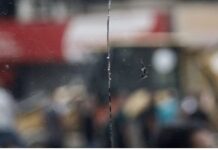AJ Staff
Al-Jazeera / July 9, 2024
A new report says Israel launched the directive, allowing for killings of captives taken by Hamas on October 7 from the very start of the war on Gaza.
The Israeli army did deploy its so-called Hannibal Directive, which allows the military to use all necessary force to prevent the capture of soldiers, during the October 7 Hamas-led attacks on Israel, resulting in the loss of both civilian and military lives, an investigation by the Israeli newspaper Haaretz has found.
Here is what we know so far:
What is the Hannibal Directive and how did it come about ?
For nearly two decades, military censorship kept the directive, also known as the Hannibal Procedure or Hannibal Protocol, under wraps. It allows the Israeli military to use any force necessary to prevent Israeli soldiers from being captured and taken into enemy territory – up to and including action that will lead to those captives’ deaths.
In 1986, Israeli army commanders drew up the doctrine after three soldiers from the infantry Givati Brigade were captured by the Lebanese group Hezbollah.
At that time, Israel occupied a southern region of Lebanon, invading the country in 1982. Hezbollah captured soldiers patrolling this zone, which would remain under Israeli occupation until 2000.
During that incident, members of the brigade saw a vehicle getting away with their fellow soldiers but did not open fire. The directive came in response to ensure this would never happen again.
The remains of the captured soldiers were returned to Israel in 1996 in exchange for the bodies of 123 Hezbollah fighters, according to the Israeli government.
Israel’s hardline stance since then is due to the fact that a soldier’s abduction is a strategic move for an enemy, Yehuda Shaul, the founder of Israeli NGO Breaking the Silence who served the Israeli army from 2001 to 2004, told Al-Jazeera in November last year. Captives give them negotiating power and the ability to affect national morale and public support for a conflict, he said. In addition, an enemy cannot extract strategic information if the soldiers get killed before being taken captive.
Throughout the current conflict, the fate of the captives taken by Hamas fighters into Gaza on October 7 continues to drive Israeli public opinion against Prime Minister Benjamin Netanyahu’s administration. For the public, the return of the captives has become a defining aspect of the war. Their welfare has been named as a priority in a variety of polls carried out by Israeli institutions.
The same has been true for previous captives. In 2006, Hamas seized Israeli soldier Gilad Shalit. After five years in captivity, he was released in exchange for more than 1,000 Palestinian prisoners, the highest Israel has released in exchange for any soldier.
The origins of the directive’s name are disputed with some sources saying it is named after a Carthaginian general who chose to poison himself instead of falling captive to the Romans in 181 BC.
Israeli military officials, however, have said a computer randomly generated the name.
In 2016, Israeli media, including The Times of Israel, reported that Israeli military chief Lieutenant-General Gadi Eisenkot had decided to “cancel” the Hannibal Protocol over apparent confusion over the freedoms it granted.
The Times of Israel reported at the time: “The directive allows soldiers to use potentially massive amounts of force to prevent a soldier from falling into the hands of the enemy. This includes the possibility of endangering the life of the soldier in question in order to prevent his capture.
“Some officers, however, understand the order to mean that soldiers ought to deliberately kill their comrade in order to stop him from being taken prisoner, not that they may accidentally injure or kill him in their attempt.”
What has the Haaretz investigation revealed ?
Despite reports the directive had been cancelled back in 2016, the Haaretz investigation, published on Sunday, found that Israeli commanders ordered its deployment without any caveat or further clarification during a chaotic response to the events of October 7 when Hamas fighters attacked army outposts and surrounding villages in southern Israel.
The attacks killed 1,139 people and 251 others were taken to Gaza as captives.
Investigating the Israeli response to that surprise attack, journalists from Haaretz reviewed military documents and gained testimonies from soldiers, mid-level and senior officers to reveal the orders and procedures laid down by the Gaza Division, Southern Command and the Israeli general staff on that day, demonstrating not just widespread knowledge of the Hannibal Protocol but its use at various locations of the attack.
During the chaos, while Israeli army commanders struggled to fully grasp the scale of the assault by Hamas, it is alleged the directive was deployed at three military facilities. However, the orders failed to distinguish between soldiers being captured and civilians.
According to Haaretz, at 7:18am, during the early hours of the attack, a report of a kidnapping at Beit Hanoon, known to Israelis as Erez, a crossing between Israel and Gaza, the order given by the divisional headquarters was simply “Hannibal at Erez”, with no further explanation or clarification, suggesting its meaning was already well known to everyone included in the message.
A message sent to the Gaza Division about five hours after the attacks began, ordered: “Not a single vehicle can return to Gaza.”
A source within Israel’s Southern Command, responsible for policing parts of the borders with Egypt, Jordan and Gaza, subsequently told Haaretz: “Everyone knew by then that such vehicles could be carrying kidnapped civilians or soldiers … Everyone knew what it meant to not let any vehicles return to Gaza.”
A United Nations-backed report from last month put the total number of civilians and soldiers lost to Israeli fire that day at more than a dozen. However, Haaretz said it is impossible to determine the extent of Israeli losses as a result of the directive.
Has the Hannibal Directive been used on other occasions ?
There have been several occasions up to its supposed revocation in 2016 when the Hannibal Directive was used or was suspected to have been deployed.
- In October 2000, three Israeli soldiers were captured by Hezbollah in the occupied Shebaa Farms (Har Dov) on the border between the occupied Golan Heights, Lebanon and Syria. On discovering the soldiers’ capture, Israel’s Northern Command ordered a “Hannibal situation”, leading to Israeli attack helicopters firing upon the convoy of vehicles thought to be carrying the captured soldiers.
- In 2006, following the abduction of an Israeli soldier by Hamas, the Hannibal Directive was invoked, but it was too late to be implemented. One month later, it was again deployed following the capture of two Israeli soldiers by Hezbollah. “If we had found them, we would have hit them, even if it meant killing the soldiers,” a senior Israeli official was later quoted by The Washington Post as saying.
- The directive was also said to have been activated during Israel’s 2008 war on Gaza when a Palestinian’s house was shelled to prevent the capture of a wounded Israeli soldier inside.
- In 2014, the directive was deployed in Rafah following the abduction of a junior Israeli officer. Investigating the carnage that followed the soldier’s capture, Amnesty International concluded that the Hannibal Directive had been deployed, leading to the deaths of up to 200 Palestinian civilians, including 75 children, in an assault that amounted to what it described as “a war crime”. The Israeli army later denied that the directive had been enacted, although conceded it had been referenced several times during radio communications.
- The Hannibal Directive was also thought to have been used during the 2014 Battle of Shujayea in Gaza City, as well as at the Qalandiya refugee camp in 2016, when an Israeli soldier went missing in the camp, leading to the massive deployment of troops.
- Quoting a senior military source, Haaretz reported that the Hannibal Directive was deployed on October 7 last year and that it was not ordered by the divisional commander. The newspaper asked who gave the order, to which the source said it “will perhaps be established by post-war investigations”.
What has the Israeli government said about the Hannibal Directive?
In 2006, The Jerusalem Post described the directive as the “rumoured” standard procedure to be used in the event of a kidnap attempt. “Soldiers are told, though never officially” the content of this order, the newspaper reported.
The Israeli military has often denied the interpretation of the directive that allows for the killing of fellow soldiers. However, confusion over the wording of the directive as well as the restriction of written versions of the protocol to senior officers has led to ambiguity over the value to be placed on individual lives in the event of an abduction.
In 2011, this led then-military chief Benny Gantz to openly state that the directive did not permit the killing of Israeli soldiers to prevent abduction.
What has the Israeli military said ?
Discussions about the Hannibal Directive were widely reported to be banned by the Israeli military censor until 2003 and the military has not commented officially about use of the directive.
Approached by Haaretz, an Israeli military spokesperson said the army “has begun conducting internal investigations of what transpired on October 7 and the preceding period”, adding, “The aim of these investigations is to learn and to draw lessons which could be used in continuing the battle. When these investigations are concluded, the results will be presented to the public with transparency.”
SOURCE: AL-JAZEERA












